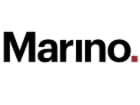Summary
- Gene-editing concern LogicBio Therapeutics, Inc. has lost ~$90 million of market cap since an IND clinical hold was placed on its LB-001 candidate in February 2020.
- The hold was lifted in August 2020 with its first patient expected to be dosed in early 2021 in a Phase 1/2 trial.
- With promising pre-clinical results, a collaboration with Takeda, and beneficial owner buying on its recent secondary, this small cap name warranted further investigation.
- A full investment analysis is provided in the paragraphs below.
- I do much more than just articles at The Insiders Forum: Members get access to model portfolios, regular updates, a chat room, and more. Get started today »
The problem with the media - is that if you talk to it, it will use things against you. And that if you don't talk to it, it will use things against you”
- Lauren Klarfeld
Today, we take an in-depth look at an intriguing gene-editing concern that had significant new buying by a beneficial owner within a recent secondary offering. It also announced some management changes earlier this month. A full analysis is provided in the paragraphs below.
Company Overview:
LogicBio Therapeutics, Inc. (LOGC) is a Lexington, Massachusetts based clinical-stage (technically) gene-editing company with a focus on rare diseases of the liver. The company has one candidate that has cleared the IND application process and should enroll its first patient into the clinic in early 2021. LogicBio was founded in 2014 and went public in 2018, raising net proceeds of $72.3 million at $10 a share. The shares currently trade near $6.30 a share, translating to a market cap of ~$2000 million.

Platforms:

The company has two gene-editing technology platforms. The first is called GeneRide, which facilitates site-specific integration of a therapeutic transgene without nucleases or exogenous promoters. In other words, it harnesses the cell’s natural DNA repair process to place a corrective gene directly into the patient’s chromosomes, which management believes will lead to a durable therapeutic benefit from a single dose. This is accomplished by integrating the transgene immediately behind the gene coding for albumin, which then co-produces the desired therapeutic protein. As the most highly expressed gene in the liver, piggybacking albumin should allow for the production of enough therapeutic protein even if only 1% of liver cells uptake the transgene.














